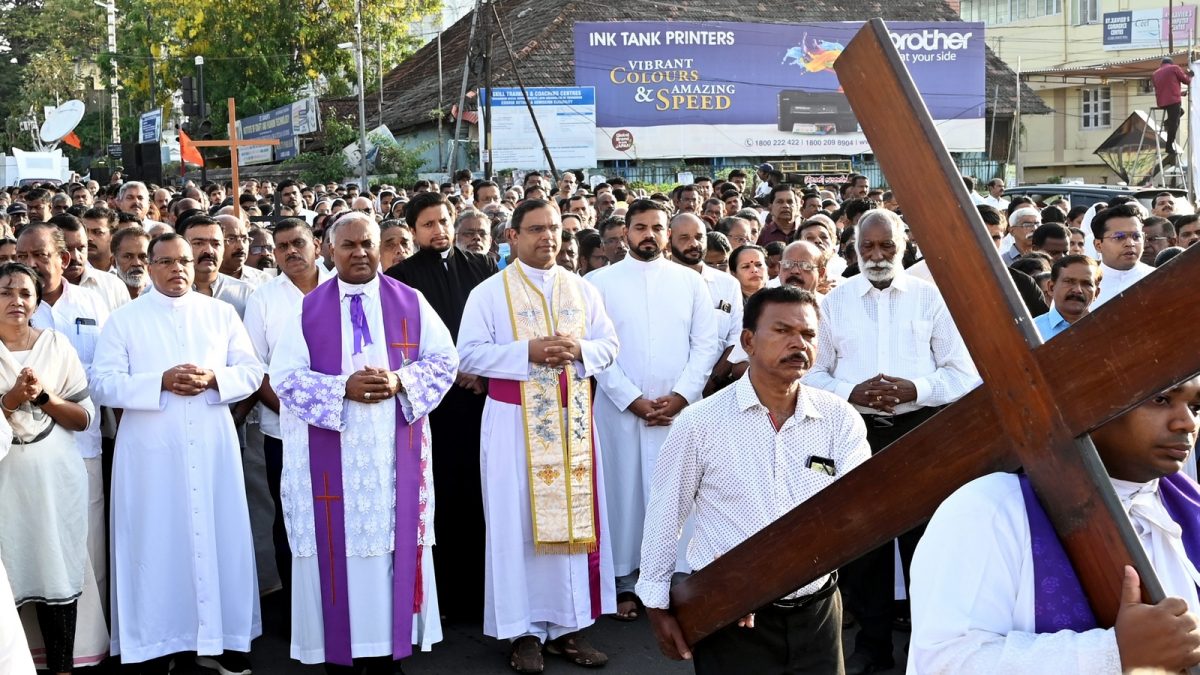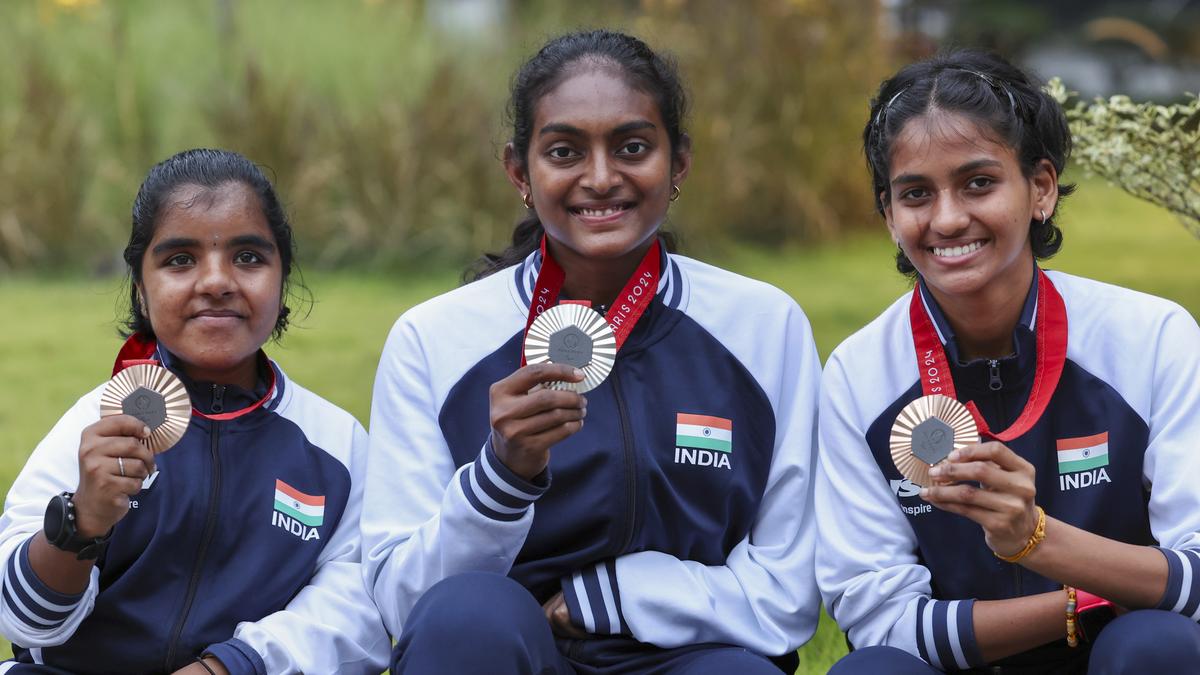Last Updated:
Institutional interests, migration patterns, and minority arithmetic drive a quiet but significant realignment in the state’s political landscape
According to the figures of the 2011 Census, 45.27 per cent of the people of the state are from the minority communities, comprising 26.56 per cent Muslims and 18.38 per cent Christians. Representational pic/PTI
Following the bitter experience in the Munambam Waqf land issue, organisations from the Christian communities such as the Catholic Bishops’ Conference of India (CBCI), Kerala Catholic Bishops’ Council (KCBC), and Kerala Catholic Congress extended support to the Waqf Amendment Bill by the NDA government and made a call to Kerala MPs to support it.
Hence, a revisit to the Kerala Church’s evolving political engagement reflects a pragmatic shift in approach—one that appears to prioritise institutional interests, demographic sustainability, and policy responsiveness over traditional loyalties.
How big is the minority in Kerala?
According to the figures of the 2011 Census, 45.27 per cent of the people of the state are from the minority communities, comprising 26.56 per cent Muslims and 18.38 per cent Christians. Hindus constitute 54.73 per cent of the population of 3.3 crores. This means that among the 45.27 per cent of minorities, 58.67 per cent are Muslims, 40.6 per cent are Christians, and the balance, 0.73 per cent, constitutes other minority communities.
However, due to various factors in the last decade, there could be a decrease of one or two per cent in the Christian population while there could be an increase of two to three per cent in the Muslim population.
What is the contribution of the Church?
The Church and its allied organisations, with the support of missionaries, have contributed mainly to the development of the educational and medical fields, prompting the state to make a remarkable presence in the sectors.
The hard-working quality of the community made them owners of large agrarian fields, including estates with cash crops, mainly rubber. The ability to migrate daringly and relocate successfully helped the community to spread across the state. Courageous entrepreneurship helped them contribute to the business sector in abundance. The social service initiatives, especially in the care of orphans, the mentally and physically challenged, and the elderly, changed the perspective of Kerala society.
How many churches in Kerala?
The believers from the Catholic Church form the majority of the nearly 65 lakh population, comprised of nearly a dozen main churches.
Hence, the major three divisions of the Catholic Church, Syro-Malabar, Latin Catholic, and Syro-Malankara, contribute nearly 60 per cent of the total Christians. Among these three, Syro-Malabar forms around 40 per cent, Latin around 13, and Malankara nearly seven.
Then come the Malankara Orthodox Syrian Church and the Jacobite Syrian Church, which together contribute around 16 per cent of the chart.
Then comes Syrian Marthoma and the Church of South India (CSI) together, sharing about 12 per cent. Various Pentecostal churches contribute around 6 per cent.
How deep is the politics of the church?
While the majority of Church bodies have historically aligned with the Congress-led UDF, emerging voices among youth and professionals reflect a more issue-based, rather than loyalty-based, political outlook.
The support of the Catholic Church accelerated the pro-Congress impression, as it has the maximum numbers. The Jacobite Syrian Church and the CSI, though, had a different approach on several occasions. However, things are changing now with the realignment as part of the strategic outreach.
Political representation: Cabinet, assembly and Parliament
Kerala has had two chief ministers from the Christian community in five terms for about 12 years. AK Antony became CM in 1977 and 1995, replacing K Karunakaran, while he led the 2001 elections, where the Congress had secured the maximum number of seats to date ever since the formation of the UDF. Then came Oommen Chandy in 2004, replacing Antony, and in 2011, to complete a full term. Curiously, there was only one chief minister from the Muslim community, CH Muhammed Koya, for just 53 days in 1979.
Three members from three different Churches—Syro Malabar, Malankara Orthodox Syrian, and CSI—are part of the Pinarayi Vijayan cabinet, while 29 members from various denominations are represented in the state assembly. Though Christians are behind Muslims in numbers, the community is a decisive factor in more than 70 assembly seats in the state, almost half of the number of MLAs. This is reflected in the number of Lok Sabha members. There are five Christians in the lower house from Kerala, while there are only three Muslims from the total 18 general seats. However, out of the nine Rajya Sabha members, there are only two Christians (Syro Malabar), while there are five Muslim representatives.
Christian congregations often reflect different voting patterns. But there’s a growing sense that their voices are not heard unless they assert institutional needs—whether it’s education, healthcare, or employment reservations. The Church is becoming more strategic, and perhaps rightly so.
Most of the Christian youth are focused on jobs, education, business, and whether a candidate understands their concerns. This generation is more transactional and less tied to party ideology.
The youth want policies that promote entrepreneurship, land reform, and clarity in regulations. The Church might still hold moral authority, but economically, the Christian community wants partners, not patrons, in short.
Major concerns of the Church
The Church is responding to its internal anxieties—shrinking demographics, mass migration to foreign lands, and declining influence over young voters.
1. Dwindling numbers
The decline in population is the major concern of the churches, especially that of Syro Malabar.
According to the 1971 Census, when the state had a population of 2.1 crores, the share of the minority communities was 40.6 per cent, with 21.1 per cent Christians and 19.5 per cent Muslims.
According to the 2001 census, the percentage of the population below six years is the cause of worry to the Christian community, as their contribution in this category was just 15.75 per cent while that of the Muslim population was 36.74 per cent.
The data of the Vital Statistics Division, Department of Economics and Statistics, under the Kerala government, quoted in a High Court judgement, said the percentage of birth analysis for 2017 shows that there are 43 per cent Muslims, 41.70 percent Hindus, and 14.96 per cent Christians.
The major reasons for this population decline:
a. Late marriage:
The females want to get settled financially before marriage. Hence, the marriage age is above that of other communities.
b. Less number of children:
Most of the families tended to adopt the fewer children policy by making the old half-a-dozen-children families an old story.
c. Non-marriage of males:
The failure of the agrarian economy makes the farmers unpopular in the wedding scene. Hence, the number of unmarried men is increasing.
d. Mass migration:
Youth from all walks of life are making a move to foreign countries either for education or for jobs. This phenomenon, which started almost a decade ago, affected the community’s presence in its strongholds.
2. Absence of tall leaders
The absence of leaders from the Christian community with pan-Kerala reach is a worrying factor for the community. With the departure of Oommen Chandy and KM Mani, the community feels orphaned. Hence, the Church itself is addressing the issues directly, and on many occasions, it results in a cacophony.
However, the rise of MA Baby as the general secretary of the CPI(M) is a positive gesture, though he cannot fit into the brackets of the community. Though the Kerala Congress (M), with KM Mani’s son Jose K Mani as the leader, is a partner in LDF, neither the party nor the leader can claim the status during his father’s times. Also, the entry of PC George and his son Shone George into the BJP, which has a union minister, George Kurian, from the community, is a pointer to the future as the emergence of outfits like CASA (Christian Association & Alliance For Social Action), which is known for its pro-BJP stance.
The Congress is likely to pick a Christian as the state chief, as there is also a warning shot to the party: the old assumptions about loyalty no longer hold.
3. Internal issues in Church
The row in the Syro-Malabar Church over a uniform liturgical code and the internal attacks are hurting the community more than ever before. The longstanding feud, fuelled by disputes over authority, property, and centuries-old theological differences between the Malankara Orthodox Syrian Church and Jacobite Syrian Church factions, continues to polarise Malankara Christians. The attacks became so intense that they weakened the cause of the community.
- Location :
Thiruvananthapuram, India, India






